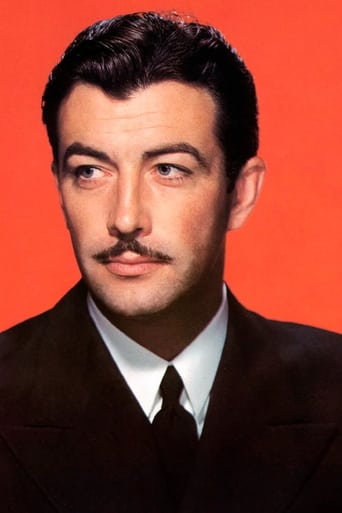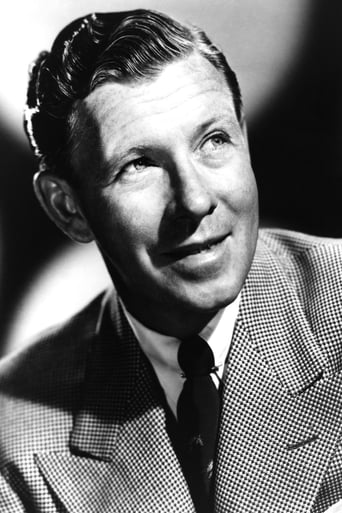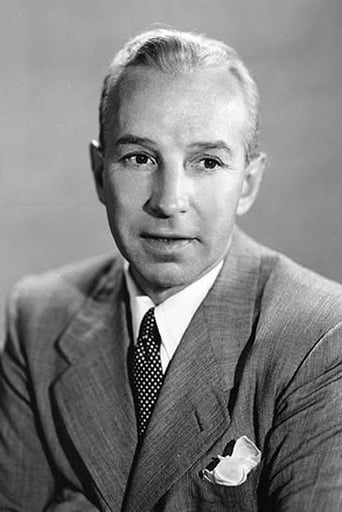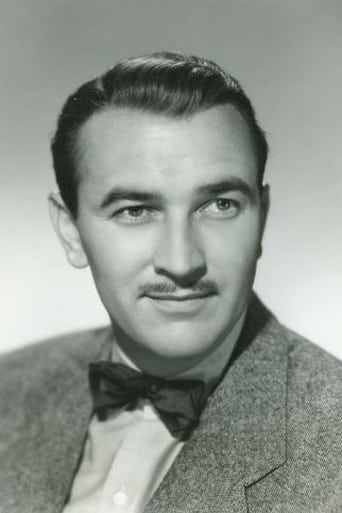Dotsthavesp
I wanted to but couldn't!
CrawlerChunky
In truth, there is barely enough story here to make a film.
filippaberry84
I think this is a new genre that they're all sort of working their way through it and haven't got all the kinks worked out yet but it's a genre that works for me.
Donald Seymour
This is one of the best movies I’ve seen in a very long time. You have to go and see this on the big screen.
JohnHowardReid
Presented by Metro-Goldwyn-Mayer. Copyright 25 May 1943 by Loew's Inc. U.S. release: 28 May 1943. New York release at the Capitol: 3 June 1943. U.K. release: 12 August 1943. Sydney release: 10 July 1944. Australian release: 13 July 1944. U.S. length: 11 reels. 10,284 feet. 114 minutes. Australian length: 10,505 feet. 117 minutes.Dedicated to the heroes of Bataan.SYNOPSIS: 13 Allied servicemen hold up the advance of the Japanese army by blowing up a bridge across a ravine.COMMENT: Although Tay Garnett's present-day reputation rests mainly upon China Seas (which many regard as a fluke high-point in an otherwise mediocre career), he is upon examination not so easily dismissed. Admittedly, his films are very uneven in quality, but some are well worth seeing repeatedly (Stand In, Love Is News, Seven Sinners, The Postman Always Rings Twice).Bataan stands in the second rank. The direction is faultless. Indeed it often skillfully manages to make a silk purse from a somewhat banal sow's ear, as in the long, fascinating tracking shots right at the beginning where tedious, explanatory dialogue is virtually pushed right off the screen by fast, fluid camera movement through Lyle Wheeler's splendid jungle sets. Not only are the dialogue scenes "lifted" by an exploratory camera and long takes, but the action scenes are staged with a vigor and a savagery unusual in the patriotic war film. Only a slight bit of speeded-up motion mars what is otherwise an all too horrifyingly realistic approach.The script is less imaginative. The plot, compounded of elements from And Then There Were None, The Lost Patrol, For Whom the Bell Tolls and many others, assembles one of those half-familiar groups of semi-predictable stock characters. Mind you, most of the players serve up their character "types" with more realism and dramatic effectiveness than they deserve; though I was not so taken with Robert Walker's eager-beaver garrulousness as were the MGM brass who signed him to a long-term contract on the strength of this film. (His only previous screen appearance was limited to an unbilled spot in Winter Carnival in 1939). Although also hampered by some banal dialogue, Robert Taylor is credibly effective as a loud-talking, efficient sergeant. George Murphy makes an apt contrast with his restrained portrayal, Thomas Mitchell looks suitably crusty, and Lee Bowman cleverly builds up a polished, likable assurance that makes his sudden departure all the more dramatic. Tom Dugan has a major role as a filthy-habited cook.Desi Arnaz strikes the one jarring note by hammily overacting (some of his dialogue seems to be dubbed). Oddly enough, the film's most impressive performance comes from Lloyd Nolan, a very uneven actor. On this occasion he has a meaty part which he plays with considerable skill and tension.The film is a little overlong. Aside from a bit of obvious special effects work, production values are unstinting. The air raid sequence right at the beginning of the film is lavishly, horrifyingly destructive. The enormous studio sets look remarkably real.This film was re-assessed in November 2003. I originally reviewed Bataan briefly in 1968 as follows: "Much more imaginatively directed than the routine clichés of the script deserve: the long tracking shots; the remarkable sequence in which the camouflaged Japanese advance; the exciting action footage (not too well served by poor special effects). Acting is adequate within the very conventional limits of the script. Photography and art direction are outstanding." I largely stand by that original assessment. --
grantss
Gritty WW2 movie.Focuses on a US unit during the early days of the US involvement in WW2. A small unit holds an important area in the US defenses, on the Bataan peninsular in the Philippines. Very gritty in that no punches are pulled in the depiction of the war. No superman-like heroics. All quite realistic.Being made in 1943, the film uses US weapons of the time of the battle, adding to the authenticity.Good performance by Robert Taylor in the lead role. Decent supporting performances, though that of Robert Walker, as the sailor, is particularly irritating.
John T. Ryan
WITH THE WHOLE world (literally) at war, the early events of heroism and atrocity by the enemy Nazi Germany, Fascist Italy and Imperial Japan were natural subjects for film. Although the greatest number of movies made was in the relatively safe haven of the United States, Hollywood commendably told the story of everyman and every nation in the great conflict, we know as World War II.SO IT WAS that MGM turned its eyes toward the Philippines and the events that followed the attack by Japan on Pearl Harbor of December 7, 1941. Names such as Manila, Corregidor and Bataan became rallying cries for our forces in those dark, early days of U.S. involvement.WITH THE NEWS of the infamous and murderous forced march of Philippine and American POW's became widely known as "the Bataan Death March", it was decided to do a picture with the name of that very peninsula on the island of Luzon.BEING WARTIME OF the greatest and scariest ilk, we needn't state that movies made at this time would and should be properly classified as being "propaganda."* With literally millions of men in uniform and under arms, both they and the public at large needed instruction and reminders of what we were fighting for and why.WITH THE SELECTION of "BATAAN" as its perfectly brief and emotionally charged title, the producers only had to craft a suitable story to serve as the vehicle of entertainment/indoctrination. In doing so, MGM turned to both film history and to American History Books.THE NOTION OF a sort of 'microcosm' of mankind had been used in film successfully over the years. As an example of (then) recent and well received application of this type was done in John Ford's STAGECOACH. The story is told of how so many unrelated and widely divergent individuals, who are now suddenly thrown together in a dangerous situation. Although unrelated, unknown to each other and having little in common; they unite for a common good.THE SECOND ELEMENT is taken from the very pages of the History of the early U.S.A. It was the 1836 incident where a small number of volunteers defended a former Franciscan Mission against an overwhelmingly superior number of regular Mexican troops at San Antonio, Texas. The makeshift fort is known as The Alamo.THE GROUP OF soldiers assembled for this highly fictionalized account represented fragments of various units and nationalities, being both American and Filipino. Additionally, the personalities represented the commoner and the well off, the cultured and the crude; with a veritable rainbow of ethnicities representing every geographical section of America.ADDED TO THIS, we have a story which strongly parallels that of those who fought for Texas' independence 105 years prior. Holding out and preventing the attacking Japanese was the fanatical credo that permeated all here. All seem to know that, whatever comes, they will die, either way. The decision is made and heartily endorsed by all to fight to the end.IN A VERY Davey Crockett-like fashion, the main character (Robert Taylor) is the last to be killed.IT SHOULD COME as no surprise that, being a product of Metro-Goldwyn-Mayer, the film assembled an outstanding cast. It was headed up by: Robert Taylor, George Murphy, Thomas Mitchell, Lloyd Nolan, Le Bowman, Robert Walker, Desi Arnaz, Barry Nelson, Phillip Terry, Roque Espiritu, Kenneth Spencer, Alex Havier, Tom Dugan and Donald Curtis. Outstanding battle scenes with plenty of extras, realistic uniforms & vehicles and authentic looking sets put the viewers right there, in the Philipines, 1941.
Steven Duhig
The "War Double Feature" DVD copy I saw was of good quality. As indicated elsewhere the choice, scope and portrayal of different ethnic background to characters was way, way ahead of it's time and a remarkable achievement, but not without cost to the studio at the time. Nevertheless the portrayals still seem a little stereotypical i.e. the Filipino shown as rather superficial, unreliable, undisciplined and perhaps not courageous as they likely really were? The African American was played well but the script called for him to regularly burst into song as if he was on the banks of the Mississippi. There was zero insight into the Japanese who were simply portrayed as blindly charging cannon fodder/bodies with no personalities and little or no battle skills at all. Far from the truth. This may have been deliberate though to avoid panic at home? The hand to hand choreography and fight scenes were very poor, unconvincing and the worst part of the movie for me I'm afraid. The trailer advertises that this was based on true authentic story/stories but I haven't found any corroboration. Of course there is no mention of the USA having to leave all of the islands or of the Bataan March and yet there is a, what for the time must have been an exceedingly optimistic, promise that the US would return to Bataan. Which of course they did God Bless them! All in all still well worth watching even 70 years later!





